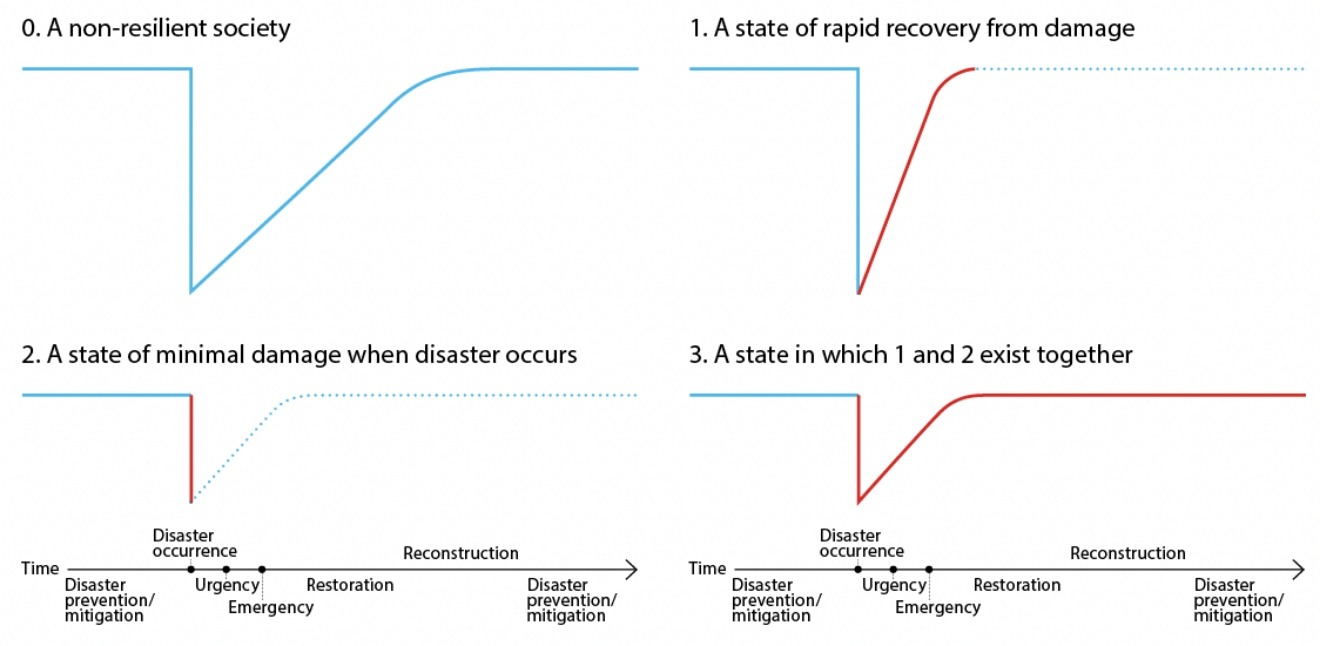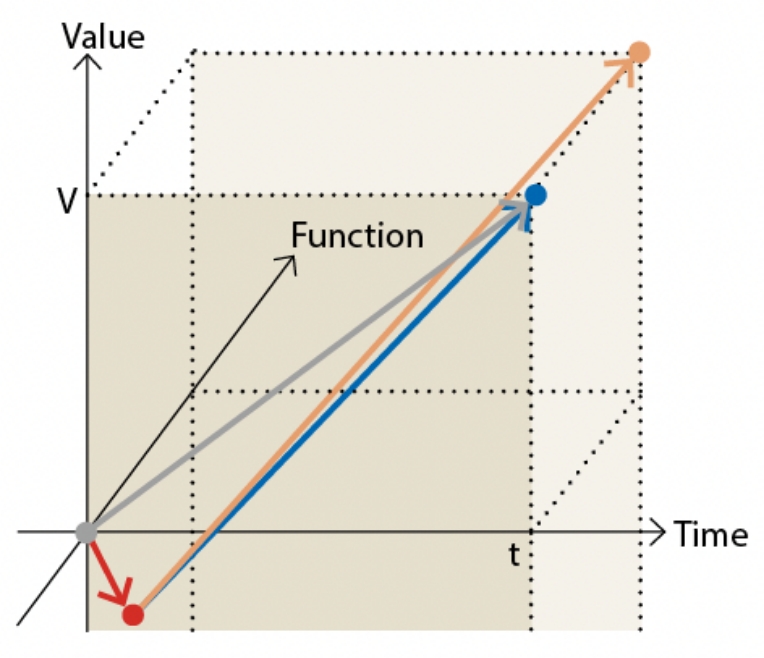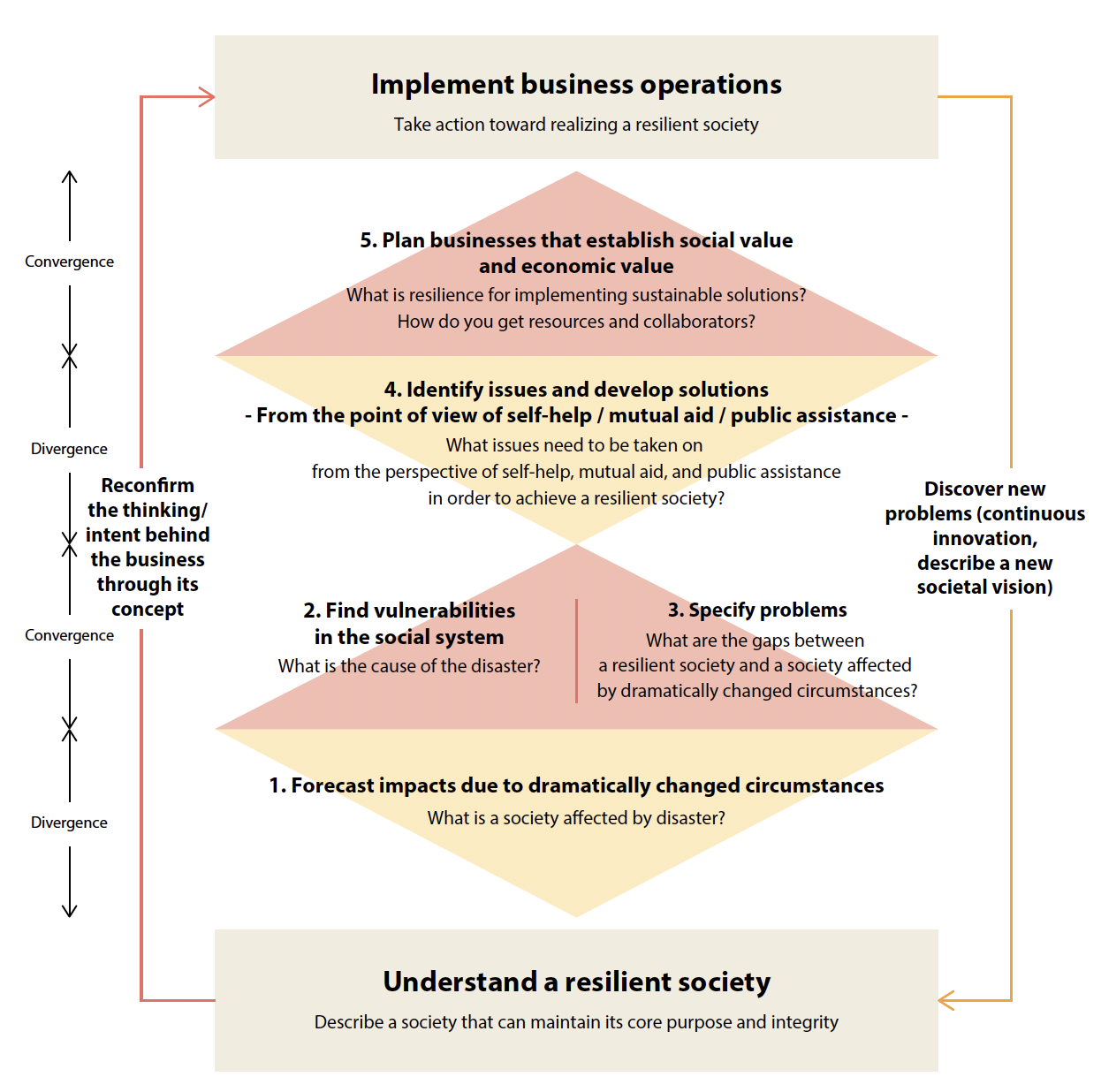Program
What Is a Resilient Society?
The word “resilience” generally means “the elasticity, restorative force, capacity to recover from illness, etc., or toughness” (Digital Daijisen, Shogakukan Inc.). It is a word used more recently in the context of psychology to refer to “processes or capabilities that adapt deftly despite circumstances posing difficulties and threats.” Moreover, the concept of resilience has come to be seen as a crucial capacity for disaster prevention and mitigation which must be found within industrial and governmental organizations, not to mention in the social and economic fields.
For this program, “resilience” is defined as “the capacity of a system, enterprise, or a person to maintain its core purpose and integrity in the face of dramatically changed circumstances” (Andrew Zolli and Ann Marie Healy, Resilience, 2013), and a resilient society as “a society that can maintain its core purpose and integrity in the face of dramatically changed circumstances." It is supposed that a resilient society is one that can achieve the following three states.

Rather than trying to restore society to the same circumstances found before the damage caused by a disaster, achieving a resilient society in the future will most certainly require a new mindset of creative restoration. We must aim for regeneration in a form that improves on the past light of our newfound clarity on how our living spaces were exposed to high risk of earthquake and tsunami (Nobuaki Hamaguchi, On Creative Restoration, 2013). We must also encourage activity that builds new regional histories (Toshihiko Hayashi, Economics of Major Disasters, 2011).

Capabilities Needed to Drive
Construction of a Resilient Society
In this program, we recognize that the construction of a resilient society is driven by individuals who possess not only basic entrepreneurial skills and abilities but also five critical capabilities, as outlined below. These individuals are pivotal in designing and realizing new projects or businesses that contribute to both reconstruction and disaster prevention / mitigation:
Employing past examples and computer simulations to anticipate societal changes in the wake of future disasters.
Analyzing resilient and impacted societies to uncover vulnerabilities within systems, including their political, legal, economic, technological, environmental, cultural, and human contexts.
Understanding the discrepancies between resilient societies and those affected by dramatically changed circumstances to pinpoint underlying problems.
- From the point of view of self-help / mutual aid / public assistance-
Generating sustainable solution ideas that leverage business initiatives, personal abilities, community resources, and government support for reconstruction and disaster prevention / mitigation.
Designing sustainable projects and businesses by generating economic value and contributing to societal benefits related to reconstruction and disaster prevention / mitigation.
Program Process Frame
American psychologist Joy Paul Guilford emphasizes the importance of divergent and convergent thinking in the idea generation process. Divergent thinking is utilized to generate a wide array of ideas, while convergent thinking focuses on identifying the most logically suitable answer or solution. These two ways of thinking play very important roles in the problem solving process.
The Double Diamond is a framework for problem solving processes proposed by the British Design Council in 2004. It uses a diamond shape to illustrate the combination of divergent and convergent thinking. This framework underscores the dynamic process of exploring an issue widely (divergence) and then refining solutions (convergence), which is essential in addressing complex problems such as building resilient societies.
Comparing the process of developing projects and business proposals for resilient societies to the Double Diamond highlights how divergent and convergent thinking can be systematically applied. This comparison is illustrated in the diagram below:

Program Overview
According to the Emergency Events Database of the Center for Research on the Epidemiology of Disasters (CRED), one of the most comprehensive global disaster databases, 16,134 disasters were reported worldwide over the 24-year period from 2000 to 2024. These disasters claimed the lives of more than 1.6 million people and affected over 4.6 billion individuals. The impact of a disaster varies depending on multiple factors, including its type, location, and the political, economic, technological, and cultural background of the affected community. As many disasters intensify and interact in increasingly complex ways, the need for an integrated and multifaceted approach to risk mitigation and decision-making strategies continues to grow.
Japan, owing to its geographical situation on the Pacific Ring of Fire, has experienced numerous devastating earthquakes, tsunamis, typhoons, and torrential rains. Notably, the Great Hanshin-Awaji Earthquake of 1995, which was the largest earthquake disaster of the post-World War II era at that time, sent shock waves throughout the world. As of January 2024, Japan has experienced 178 earthquakes with human casualties since 1996. The most devastating of these include the 2004 Mid-Niigata Prefecture Earthquake, the 2011 Great East Japan Earthquake, the 2016 Kumamoto Earthquake, and the 2018 Hokkaido Eastern Iburi Earthquake. On January 1, 2024, a significant earthquake struck the Noto Peninsula in Ishikawa Prefecture, and reconstruction efforts are ongoing.
Beyond earthquakes, disasters such as the 2018 Western Japan Heavy Rain and the 2019 Typhoon Hagibis (Reiwa 1 East Japan Typhoon) resulted in significant casualties due to river flooding and landslides. Furthermore, on September 21, 2024, heavy rains struck the Noto region, which was still recovering from the earthquake. Meanwhile, the global COVID-19 pandemic that emerged in 2019 not only caused numerous deaths but also dramatically altered lifestyles worldwide.
As time passes since these disasters, various reconstruction processes and phases are observable across Japan. Kobe has already completed its recovery from the Great Hanshin-Awaji Earthquake, providing a long-term validation of "Build Back Better" efforts. In the Tohoku region, which suffered immense damage from the Great East Japan Earthquake and where reconstruction is still ongoing in some areas, retrospective analyses of the reconstruction process and discussions on future policies continue.
This program offers participants the opportunity to study past disasters and subsequent reconstruction processes while experiencing the creation of business ideas aimed at achieving a resilient society. Through this, the program seeks to foster individuals capable of generating creative value and realizing sustainable businesses.
This program was implemented as part of the JST START University Ecosystem Promotion Type (Supporting Creation of Startup Ecosystem in Startup Cities) and received support from the MIRAI (Multidisciplinary Integration for Resilience and Innovation) Alliance of Kobe University.

